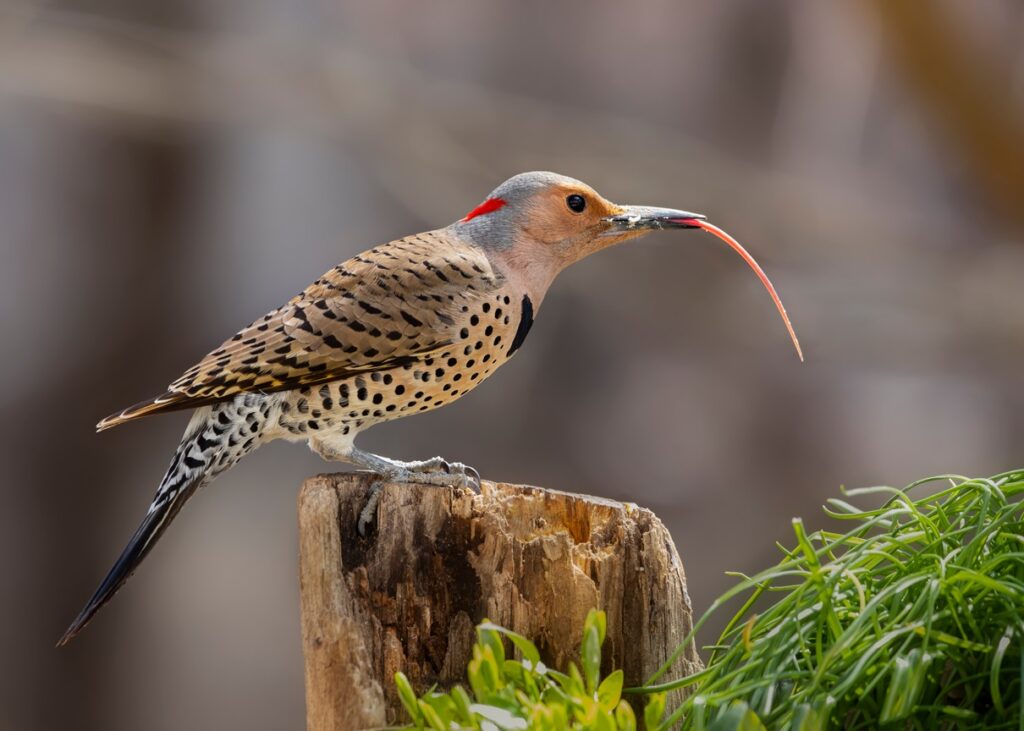Although further research is required to learn more about bird tongues, there is some information available that can help bird enthusiasts understand how these curious creatures feed and whether they have tongues that facilitate feeding.
Scientists confirm that birds have tongues, but they’re different in every species. That’s because the tongue structure adapted to the bird’s needs, food sources, and feeding techniques. As for taste buds – while birds do have them, they’re much fewer than in humans.
If you want to learn more, keep reading, as we’ve gathered some jaw-dropping details about the topic!
Do Birds Have Tongues?
Birds have tongues, but they do not resemble human tongues. They’re much different and vary between species. Their length, structure, and form are dependent on what they’re used for and adapted to the bird’s needs. What is certain, though, is that every bird tongue has a well-defined physiology.
They consist of bone and cartilage, epithelium, lingual nail, papillae, and salivary glands.
The bones and cartilage make the tongue flexible – altogether, they’re known as the hyoid apparatus. The epithelium is a cell layer covering the tongue.
While the other two components are present in all bird tongues, the lingual nail and the papillae are characteristic only to certain birds, the former being a hardened tongue tip made of keratin, while the latter are barb-like structures.
As for the salivary glands – all birds have them, as they help protect the mouth against germs and bacteria.
As such, let’s discover more about what types of tongues some birds have, how they look, and what their role is in the feeding process.
Long, Sticky Tongues
Some birds, like woodpeckers, have very long, retractable tongues, which are used to catch food sources from places difficult to access otherwise.
Their tongues are supported by a cartilaginous apparatus that wraps around the skull and ends up in the right nostril – just imagine the complexity of this!
Woodpeckers exhibit another peculiarity – their tongues may be covered in a sticky fluid that facilitates insect capturing. Hummingbirds, on the other hand, have brush-like projections near the tongue tip, which aids in drawing a flower’s liquid.

Long, Nectar-Eating Tongues
Birds like hummingbirds have tongues specialized for sucking up flower nectar. They’re usually thin, long, and forked at the tip. The forked tips curl and uncurl while withdrawing nectar, thus allowing the birds to eat as much as needed.
Piston Tongues
Then, we have the birds that filter food particles from mud – flamingoes or ducks, for example. They have the most complicated tongues, which are often referred to as piston tongues.
They have a straw-like appearance and feature hair-like structures called papillae, whose appearance varies depending on the species.
Spiny Tongues
Other birds like penguins and red-breasted mergansers have tongues covered completely in spines, which sometimes extend to the roof of their mouths. Their bills are covered in spiny ridges used to facilitate fish catching.
As such, this is primarily characteristic of fish-eating birds, but not all exhibit these features.
Muscular Tongues
Another type of bird tongue is excellent at holding seeds and grains without dropping them. This is characteristic of some ducks, chickens, geese, and parrots. They have what scientists call a lingual nail, meaning a hardened tongue tip consisting of keratin.
Grooved Tongues
Another type of tongue common in vultures and eagles is often called a grooved tongue because it features a groove running along the tongue center.
Small Tongues
However, not all birds have specialized tongues used to catch food. Some have small tongues that do not have a particular purpose in feeding, except for the fact that they may allow swallowing large food sources. Emus, pelicans, and ostriches are excellent examples.
Do Birds Have Taste Buds?
Until the 1900s, scientists believed birds didn’t have taste buds. It was later discovered that they did possess taste buds but in a significantly reduced number compared to humans.
While people have more than 100,000 taste buds, pigeons have 27 to 59, while chickens only have 24, for example.
Besides this, their position on the tongue is different, too. Human taste buds are located inside the papillae (the tiny bumps covering our tongues). Birds have taste buds only at the base of their tongue and on either the roof or the floor of their mouths.
As such, they can taste sour, acidic, bitter, salty, and sweet flavors.

What Birds Have the Longest Tongues?
It is believed that the northern flicker is among the birds with the longest tongues. It is a woodpecker species with distinctive plumage featuring black bars on the wings and back.
Despite having a somewhat short bill, the northern flicker tongue can reach 2 inches beyond the bill when catching prey!
